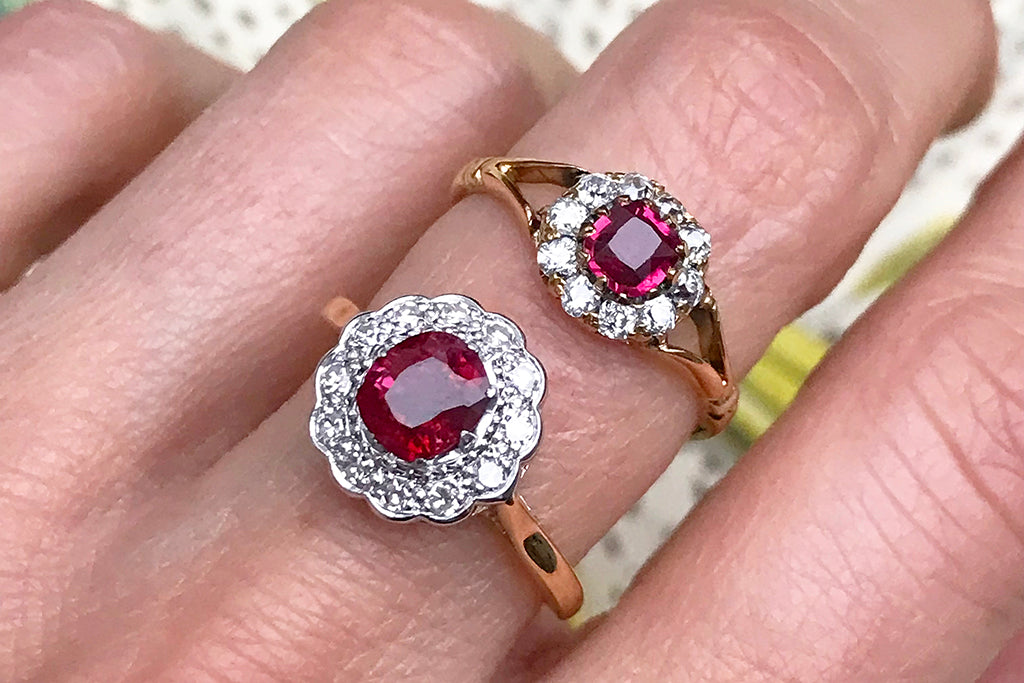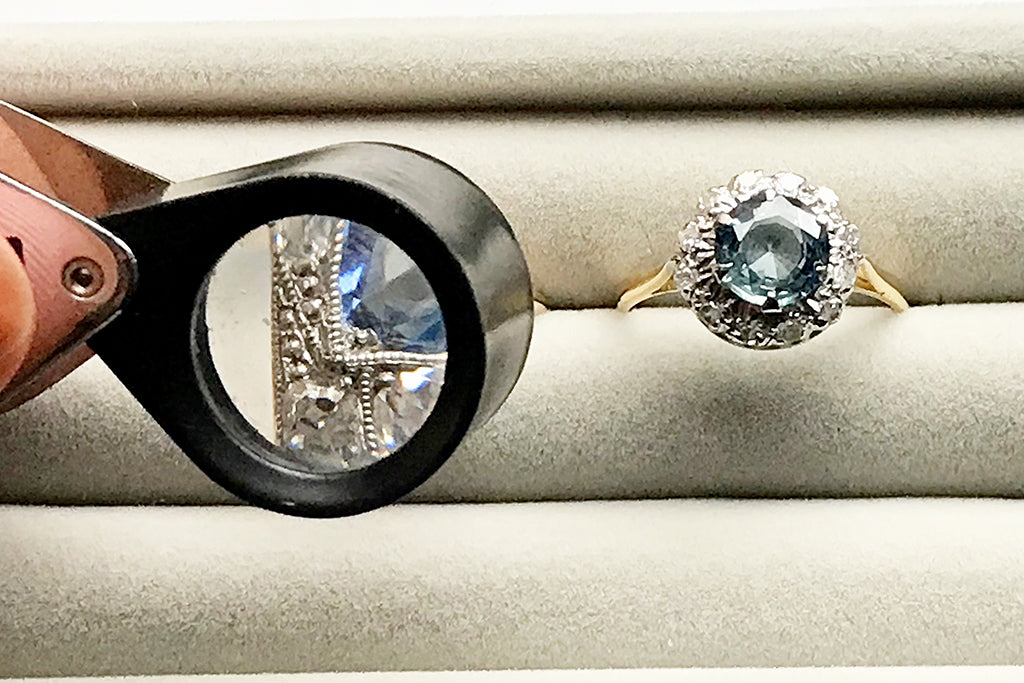
Are antique rings more sustainable?
Repairing, repurposing and reclaiming old jewellery is nothing new – it’s something we’ve been doing for centuries. But as the world grows increasingly conscious of the jewellery trade’s deeply entrenched unethical practises and the urgency of the ongoing climate crisis, demand for antique and vintage engagement rings is on the rise not just because of their charming designs and exquisite craftsmanship, but their sustainable credentials. This blog post explores whether pre-loved rings really are a more sustainable choice than contemporary rings, discussing their environmental impact, ethical purpose, and longevity.
The Environmental Impact of Antique Rings

Whilst 1 gram of mined gold generates 36,410 grams of greenhouse gases, a gold antique ring is part of a circular economy, retaining metal that has already been above-ground for a long time. Let’s say the average wedding band (if there is such a thing!) weighs 4 grams. If cast in newly mined gold, this ring alone would require the excavation of 20 tonnes of waste and account for 145,640 grams of greenhouse gases. That’s roughly the equivalent of what’s generated by the average British household in a seven-day week. Even a contemporary ring crafted from recycled gold leaves a small carbon footprint in its wake; processing and refining metal are energy intensive steps. We don’t have parallel figures for mined diamonds and gemstones to hand, but the story is not dissimilar.
Unfortunately, there are thousands of mine sites around the world where environmental sustainability and preservation are not prioritised. Here, the extraction of precious materials is not just responsible for disproportionate carbon footprints, but deforestation, water and soil pollution, and the use of harmful chemicals like mercury and cyanide.
It’s important to mention here that such environmental atrocities are not true of all mines; there are also mining cooperatives everywhere working hard to extract precious materials responsibly, with third party assurance labels like Fairmined and Fairtrade helping to maintain strict environmental standards and grant the traceability us jewellers and customers need for peace of mind. In other words, it’s pretty easy to ensure that buying a new ring is not synonymous with buying into violations of our planet. However, if you wish to separate yourself from extractive activities altogether, an antique ring is an opportunity to enjoy a piece of jewellery that hasn’t called on any recent mining to exist.
Economic Sustainability: Cost and Longevity

Decades of surplus wealth and overconsumption have generated a culture of wastefulness. As we transition from an era of overabundance into one of resource scarcity, we’re advocates for the circular economy model, which promotes designing for longevity and repairing what’s already there.
At The Vintage Ring Company, a ring needs to be a little special to catch our eye. Ultimately, if it doesn’t boast high-quality materials and exquisite craftsmanship, you won’t find it on our website. Luckily for us, skilful craftsmanship is commonplace in the world of antique and vintage rings, most of those in our treasure chest brought to life carefully before the advent of mass production. This considered, detail-orientated approach to materials and manufacture doesn’t just ensure the durability that sees these relics sparkling year after year; it’s what contributes to their appreciating market value. Unlike mass produced contemporary jewellery that may fluctuate in value, antique rings are generally a reliable long-term investment.
What’s more, each of our pre-loved rings goes through a rigorous process of TLC to ensure that by the time it reaches you, it’s looking and performing its best. We employ a craftsman in London’s Hatton Garden to check the setting of every stone and, where necessary, to fortify it. We thoroughly clean every ring to remove any dirt that may have built up over time and polish the gold or platinum to a gleaming shine. Jewellery deals in some of the most resilient natural materials known to man, and we know that with a little love and maintenance, an antique ring is in it for the long haul.
Ethical Considerations of Antique Rings

There is no one-size-fits-all definition of ‘ethical jewellery’; no single state of perfection to be attained.
To some, an ethical piece of jewellery is one that actively addresses current socioeconomic matters and contributes positively to the lives of the miners and craftspeople involved in its supply chain. If you wish for your purchase to support those for whom mining and production is a crucial source of income, reclaiming a vintage ring is perhaps not for you.
If you are instead leaning towards an antique ring because your current concerns are environmental, ensuring you shop with a local independent is an opportunity to leave a positive mark on somebody’s life by alternative means. After all, when you buy from a small business like ours, an actual person does a little happy dance!


